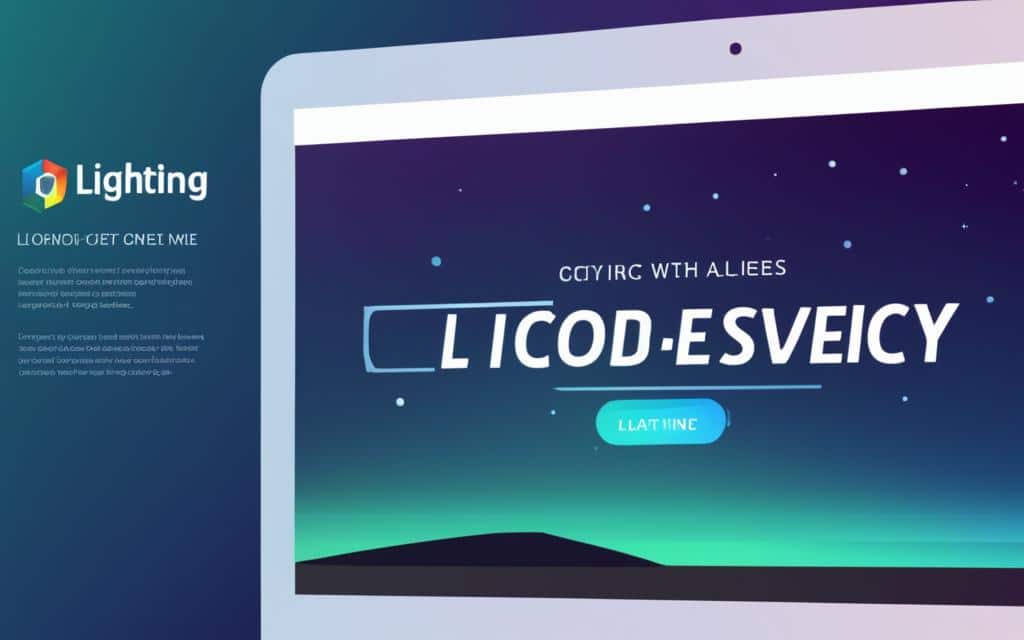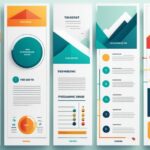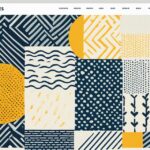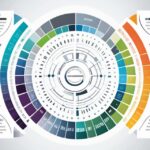Table of Contents
Optimising web graphics is crucial for improving the speed and performance of your website. In today’s fast-paced digital world, user attention spans are short, and every second counts when it comes to loading web pages. Research shows that a one-second delay in page load time can result in a 7% reduction in conversions, representing a significant loss in revenue and potential customers.
Large images are often the primary culprits behind slow-loading web pages. When images are not optimised for the web, they can increase the page size, slowing down the loading speed. This can lead to a frustrating user experience, high bounce rates, and poor search engine rankings. To avoid these issues, it is essential to focus on optimising your web graphics.
By reducing the file size of your images and implementing compression techniques, you can significantly improve your website’s loading speed and overall performance. Compressed images allow them to be transmitted more quickly, resulting in faster loading times and improved user experience. Additionally, optimised images help your website load smoothly across different devices and screen sizes, catering to a wider audience.
Whether you are a small business owner, a content creator, or a web developer, investing time and effort into optimising your web graphics can yield tangible results. Not only will your website load faster, but it will also improve user engagement, decrease bounce rates, and potentially boost your search engine rankings.
In this article, we will explore different strategies and best practices for optimising web graphics to enhance your website’s speed and performance. From image compression techniques to choosing the right file formats and utilising image optimisation tools, we will provide you with valuable insights to help you optimise your web graphics effectively.
Don’t let slow-loading web graphics be a barrier to delivering an exceptional user experience. Let’s dive in and discover how to optimise your web graphics for speed and performance.
What Does It Mean to Optimize Images?
Image optimization involves decreasing the file size of images to improve website performance. Large images can significantly slow down web page loading times, leading to a poor user experience. By reducing the file size of images through compression techniques, such as lossy and lossless compression, you can speed up the load time of your web pages. This will result in faster page loading speed, improved user experience, and better website performance.
Optimizing images is a crucial step in enhancing website performance and ensuring a seamless user experience. When website visitors encounter slow-loading pages, they are more likely to abandon the site and look for alternatives. Users expect websites to load quickly, and if they have to wait for images to load, they may lose interest and leave the site.
One of the primary methods to optimize images is by reducing their file size. This can be achieved through compression techniques, which aim to decrease the size of the image file without significantly affecting its quality. There are two main types of image compression: lossy compression and lossless compression.
Lossy compression removes certain details from the image to reduce the file size. While this may result in a slight loss of image quality, it allows for a more significant reduction in file size. Lossy compression is often used for images where a small loss in quality is acceptable, such as photographs.
On the other hand, lossless compression reduces file size without sacrificing image quality. It achieves this by eliminating redundant data and optimizing the image’s coding structure. Lossless compression is typically used for images that require high-quality representation, such as graphics or illustrations.
To optimize images effectively, it is crucial to choose the appropriate compression method based on the image’s content and purpose. By selecting the right compression technique, web developers and designers can strike a balance between image quality and file size reduction, ensuring optimal website performance.
Decreasing File Size for Improved Website Performance
“Large images can significantly slow down web page loading times, leading to a poor user experience.”
| Lossy Compression | Lossless Compression |
|---|---|
| Removes certain image details to reduce file size | Reduces file size without sacrificing image quality |
| Significant reduction in file size | Slight reduction in file size |
| Suitable for photographs | Ideal for graphics and illustrations |
Optimizing images has a direct impact on website performance. By decreasing the file size of images through proper compression techniques, web pages can load faster, resulting in an improved user experience. Faster loading times not only enhance user satisfaction but also contribute to better SEO rankings and increased website visibility. Whether it’s lossy or lossless compression, choosing the right method for image optimization is essential in achieving optimal website performance.
The Benefits of Formatting Your Images
Formatting your images offers numerous benefits for your website. According to HTTP Archive, images make up an average of 21% of a webpage’s weight. By optimizing your images, you can significantly improve your page loading speed. This is crucial as slow-loading pages can lead to higher bounce rates and negatively impact SEO.
When you format your images, you reduce their file size without compromising their quality. This helps in minimizing the amount of data that needs to be transferred from the server to the user’s browser, resulting in faster loading times. Users will experience quicker access to your website, leading to a better overall browsing experience.
One of the key benefits of image formatting is its impact on SEO optimization. By reducing the weight of your web pages through image formatting, you improve your site’s performance in search engine rankings. Search engines prioritize websites that load quickly, and optimizing your images contributes to an overall faster loading speed.
Additionally, formatting your images allows search engines to crawl and index them more efficiently. This can potentially boost your visibility in Google image search, driving more organic traffic to your website. By enhancing your website’s SEO through image formatting, you increase the likelihood of reaching a wider audience and attracting more potential customers.
To summarize, the benefits of formatting your images include:
- Improved page loading speed
- Enhanced user experience
- Reduced bounce rates
- Increased visibility in search engine rankings
- Optimized SEO performance
By taking the time to format your images properly, you can reap these benefits and ensure that your website is optimized for speed, performance, and SEO.
How to Optimize Images for Web and Performance
When it comes to optimizing images for the web and performance, there are several key steps you can take to enhance your website’s speed and overall user experience. By implementing these strategies, you can ensure that your images are optimized for fast loading times and optimal performance.
Choose the Right File Format
The first step in optimizing your images is to select the appropriate file format. Depending on the type of image and its specific requirements, you can choose between popular formats such as PNG, JPEG, or GIF. Each format has its advantages and disadvantages in terms of file size and image quality. For example, JPEG is a great choice for photographs due to its smaller file size, while PNG is ideal for images with transparency. Selecting the right file format will help you strike the perfect balance between image quality and file size reduction.
Utilize Compression Methods
Compression is a crucial technique for reducing the file size of your images without sacrificing image quality. There are two main types of compression methods: lossy and lossless. Lossy compression removes unnecessary data from the image, resulting in smaller file sizes but a slight decrease in image quality. Lossless compression, on the other hand, preserves all the image data while still reducing the file size. Depending on your requirements and the level of image quality you are willing to compromise, you can choose the compression method that best suits your needs.
Take Advantage of Image Optimization Tools
To streamline the process of optimizing your images, you can leverage various image optimization tools and programs. These tools offer advanced features and functionalities that can automate and simplify the optimization process. Popular tools such as Adobe Photoshop, GIMP, and JPEGmini provide options for resizing, compressing, and optimizing images for web and performance. By utilizing these tools, you can achieve maximum optimization with minimum effort.
Remember, optimizing your images for the web and performance is essential for improving your website’s loading speed and overall user experience. By choosing the right file format, utilizing compression methods, and leveraging image optimization tools, you can ensure that your images are optimized to deliver fast and high-performing web pages.
*Note: The above image illustrates the various image optimization tools available.*
Whether you are a web developer or a content creator, implementing these image optimization techniques will significantly enhance your website’s performance and user satisfaction. By optimizing your images, you can reduce page load times, improve SEO rankings, and provide a seamless browsing experience for your visitors. Take the necessary steps to optimize your images and unlock the full potential of your website.
Conclusion
Optimizing web graphics is crucial for improving the speed and performance of your website. By reducing the file size of images and employing effective compression techniques, you can significantly enhance your website’s loading speed and overall performance.
Choosing the appropriate file format for your images, understanding different compression methods, and utilizing image optimization tools are key strategies to optimize images for the web and performance. By implementing these strategies, you can not only enhance the user experience but also positively impact SEO, improving your website’s visibility and rankings.
So, don’t wait any longer. Start optimizing your web graphics today to ensure your website is running at optimal speed and performance. By investing in image optimization strategies, you can provide visitors with a seamless browsing experience while also boosting your website’s search engine rankings.
FAQ
Why is it important to optimize web graphics?
Optimizing web graphics is crucial for improving the speed and performance of your website. By reducing the file size of your images and using compression techniques, you can significantly enhance your website’s loading speed and overall performance.
How does optimizing images improve website performance?
When images are not optimized, they can significantly slow down web page loading times, leading to a poor user experience. By reducing the file size of images through compression techniques, such as lossy and lossless compression, you can speed up the load time of your web pages. This will result in faster page loading speed, improved user experience, and better website performance.
What are the benefits of formatting images on a website?
Formatting your images offers numerous benefits for your website. According to HTTP Archive, images make up an average of 21% of a webpage’s weight. By optimizing your images, you can significantly improve your page loading speed. This is crucial as slow-loading pages can lead to higher bounce rates and negatively impact SEO. Additionally, formatting your images can improve your site’s SEO by reducing page weight and improving overall website performance. It also allows search engines to crawl and index your images faster, potentially boosting your visibility in Google image search.
How can I optimize images for web and performance?
There are several ways to optimize images for the web and performance. The first step is to choose the right file format for your images, such as PNG, JPEG, or GIF, depending on the type of image and its requirements. Next, you can compress your images using either lossy or lossless compression techniques, depending on the desired balance between image quality and file size reduction. There are also various image optimization tools and programs available, such as Adobe Photoshop, GIMP, and JPEGmini, that can assist in optimizing your images for the web and performance.
How can optimizing web graphics benefit my website?
Optimizing web graphics is essential for improving the speed and performance of your website. By reducing the file size of images and using compression techniques, you can significantly enhance your website’s loading speed and overall performance. Choosing the right file format, understanding compression methods, and utilizing image optimization tools are key strategies to optimize images for the web and performance. Implementing these strategies will not only enhance user experience but also positively impact SEO and boost your website’s visibility and rankings. Start optimizing your web graphics today to optimize your website for speed and performance.













